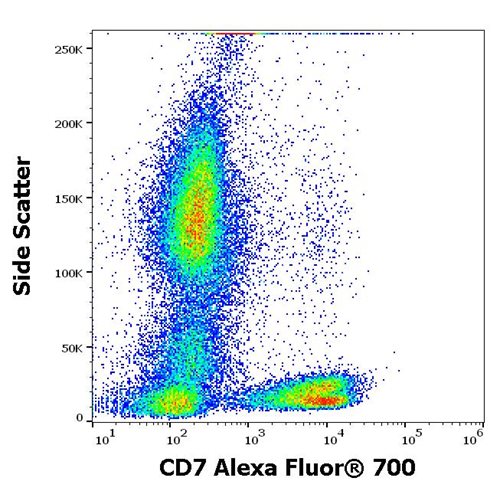Polyclonal Antibody to Paxillin (Phospho-Tyr31)

Figure 1: Western blot analysis of extracts from HT29 cells untreated or treated with PMA using Paxillin(Phospho-Tyr31) Antibody 35-1188 .
Roll over image to zoom in
Shipping Info:
For estimated delivery dates, please contact us at [email protected]
| Format : | Purified |
| Amount : | 100 µl |
| Isotype : | Rabbit IgG |
| Content : | Supplied at 1.0mg/mL in phosphate buffered saline (without Mg2+ and Ca2+), pH 7.4, 150mM NaCl, 0.02% sodium azide and 50% glycerol. |
| Storage condition : | Store the antibody at 4°C, stable for 6 months. For long-term storage, store at -20°C. Avoid repeated freeze and thaw cycles. |
An antiphosphotyrosine antibody was used to identify proteins that are phosphorylated in Rous sarcoma virus-transformed chick embryo fibroblasts, and a 76-kD protein was obtained that localizes to focal adhesions at the ends of actin-containing stress fibers in nontransformed cells (Ref.1). This protein was purified from chicken gizzard smooth muscle, and was named Pxn (Paxillin) ('paxillus' means 'small stake' or 'peg' in Latin) as a protein tethered to the membrane at focal adhesions
Davidson D, et al. (2001) EMBO J 20(13): 3414-3426.
Fleming I, et al. (1999) Proc Natl Acad Sci U S A 96(3): 1123-1128.
Goldberg MB. (2001) Microbiol Mol Biol Rev 65(4): 595-626.
Kook S, et al. (2000) Mol Biol Cell 11(3): 929-939.
Predicted MW: 68kd, Western blotting: 1:500~1:1000
For Research Use Only. Not for use in diagnostic/therapeutics procedures.
| Subcellular location: | Cytoplasm, Cell junction, Cytoplasm |
| Post transnational modification: | Phosphorylated by MAPK1/ERK2 (By similarity). Phosphorylated on tyrosine residues during integrin-mediated cell adhesion, embryonic development, fibroblast transformation and following stimulation of cells by mitogens. Phosphorylation at Ser-244 by CDK5 reduces its interaction with PTK2/FAK1 in matrix-cell focal adhesions (MCFA) during oligodendrocytes (OLs) differentiation. Phosphorylation at Tyr-31 and Tyr-118 by PTK6 promote the activation of RAC1 via CRK/CrKII, thereby promoting migration and invasion. Phosphorylation at Ser-250 by SLK is required for PXN redistribution and cell motility (PubMed:23128389). |
| BioGrid: | 111787. 98 interactions. |
|
There are currently no product reviews
|















.png)












